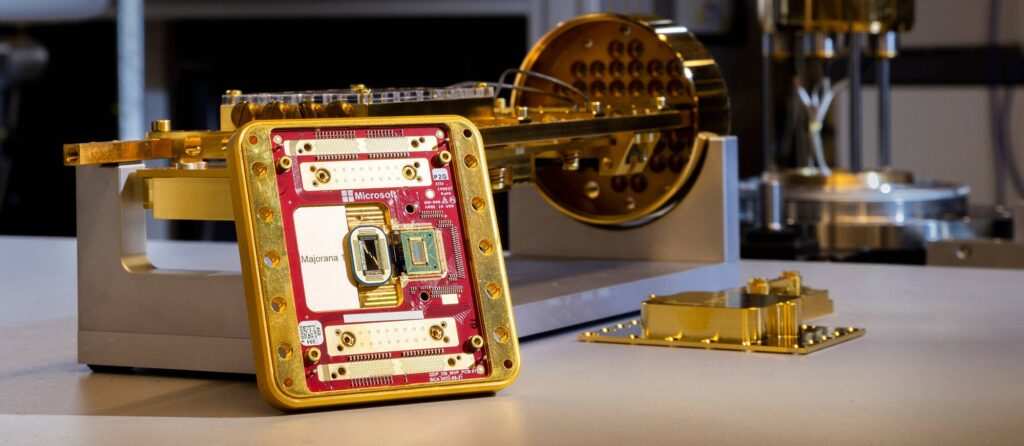Microsoft’s Majorana 1 Quantum Chip: A New Era in Computing
Introduction to Quantum Computing
Quantum computing represents a revolution in how we process information. Unlike classical computers, which use bits (0s and 1s), quantum computers utilize qubits. These qubits can exist in multiple states at once due to the principles of quantum mechanics. This ability allows quantum computers to perform complex calculations much faster than traditional computers—if the obstacles to their practical application can be overcome.
Recently, Microsoft has announced significant advancements in this technology with their new quantum chip, the Majorana 1.
What is Majorana 1?
Majorana 1 is a quantum chip that leverages a unique structure known as a Topological Core. This architecture is designed to eventually support millions of qubits on a single chip. Microsoft believes this chip can bring quantum computing closer to real-world applications within the next few years, a much shorter timeline than previously anticipated.
Key features of Majorana 1 include:
- Unique Qubit Design: Unlike classical bits, which are either on or off, qubits can be in a state of both 0 and 1 simultaneously.
- Scalability: The Majorana 1 chip is designed to facilitate the scaling of quantum systems to millions of qubits.
The Importance of Qubits
Qubits are the building blocks of quantum computers. They hold the promise of solving complex problems faster than traditional computers by:
- Representing more information: Each qubit can represent multiple values at once.
- Performing simultaneous calculations: This could drastically reduce the time needed for specific computations.
However, current quantum computing technology trails far behind expectations. Notably, other companies, like Google and IBM, have also made strides in developing quantum chips, but their capabilities are several orders of magnitude less than what Microsoft seeks to achieve.
Addressing Quantum Challenges
One significant obstacle in quantum computing is the issue of error correction. For useful operations, quantum computers require many physical qubits to account for errors, which limits their scalability. Microsoft aims to overcome this challenge with the Majorana 1 chip, which uses topological qubits that are inherently more stable and require fewer error corrections, making them easier to scale.
Understanding the technical jargon is crucial:
- Physical Qubits: The actual hardware used to implement qubits.
- Logical Qubits: Higher-level abstractions that represent qubits in computation.
The Technology Behind Majorana 1
-
Material Innovation: Majorana 1 is built using topological superconductors. These materials allow for the manipulation of qubits in a more stable manner, making quantum operations simpler to manage.
-
Historical Context: The concept of this topological state dates back to mathematician Ettore Majorana, who theorized this new state of matter over a hundred years ago. Microsoft claims to have observed and controlled it for practical use in computing.
- Comparison with Traditional Materials: Traditionally, silicon has been used in chip design. However, for Majorana 1, Microsoft uses indium arsenide, which offers enhanced performance in superconductive states, particularly under extremely low temperatures.
Future of Quantum Computing at Microsoft
Microsoft’s ambitious goals are supported by a detailed quantum roadmap that outlines their strategy for achieving practical quantum computing. As part of this journey, the company recognizes the need for:
- A clear path to millions of qubits: Without scalable qubit technology, solving complex problems would remain out of reach.
- Partnerships with organizations like DARPA: Collaborations that can guide the development of quantum computing for industrial and governmental applications ensure that research remains focused and relevant.
Conclusions
Microsoft’s announcement of the Majorana 1 chip represents a significant leap in the world of quantum computing. While they currently possess only eight topological qubits, the architecture supports expansion to millions. The development of stable qubits with minimal error correction could pave the way for breakthroughs in various fields, from cryptography to pharmaceuticals.
The company’s commitment to a faster timeline for practical quantum computing is hopeful. As they continue to refine this technology, the next few years could bring about transformative changes in how we compute, opening avenues previously thought impossible. Microsoft’s efforts highlight the rapidly evolving field of quantum computing and its potential to reshape technology as we know it.
